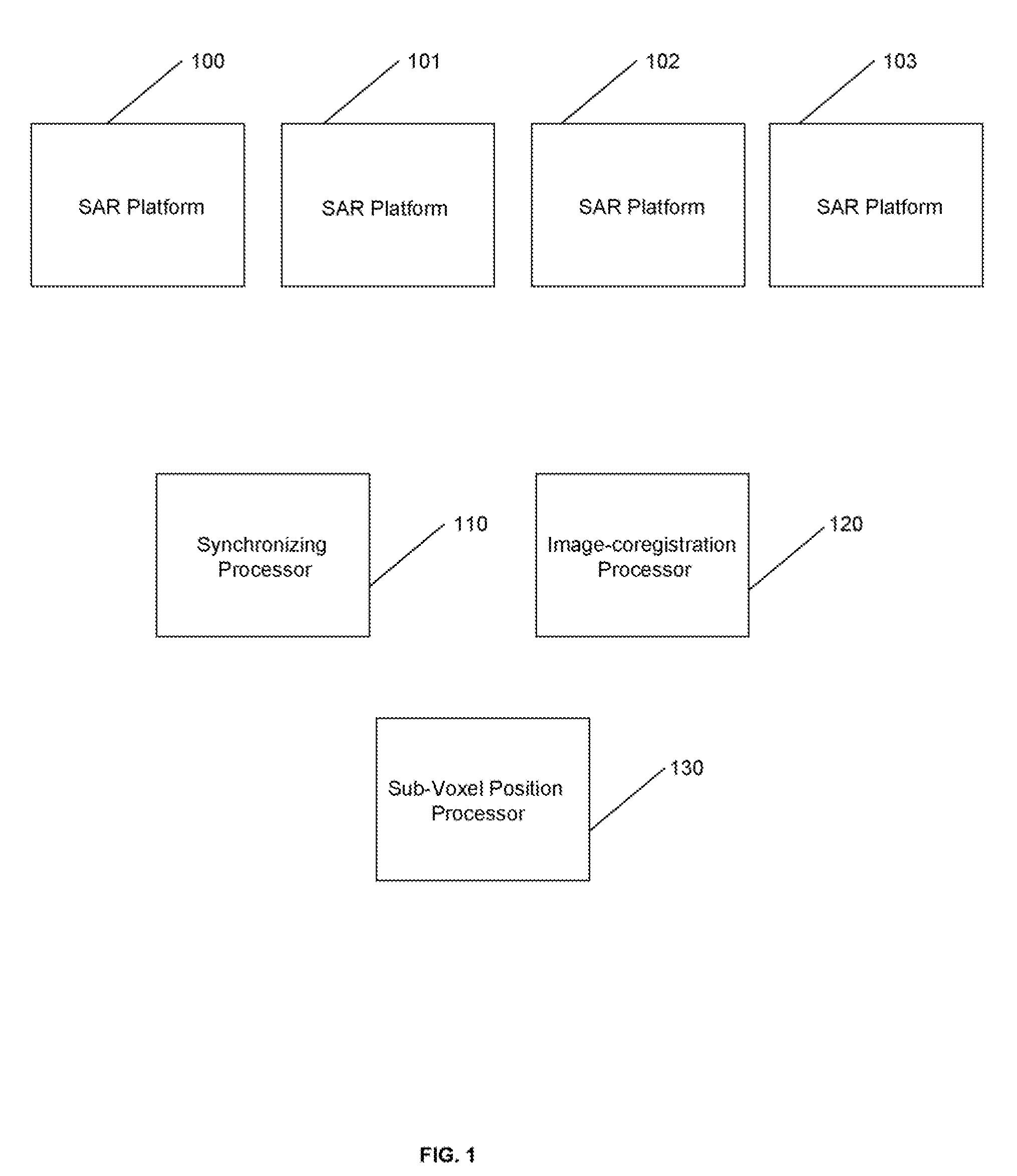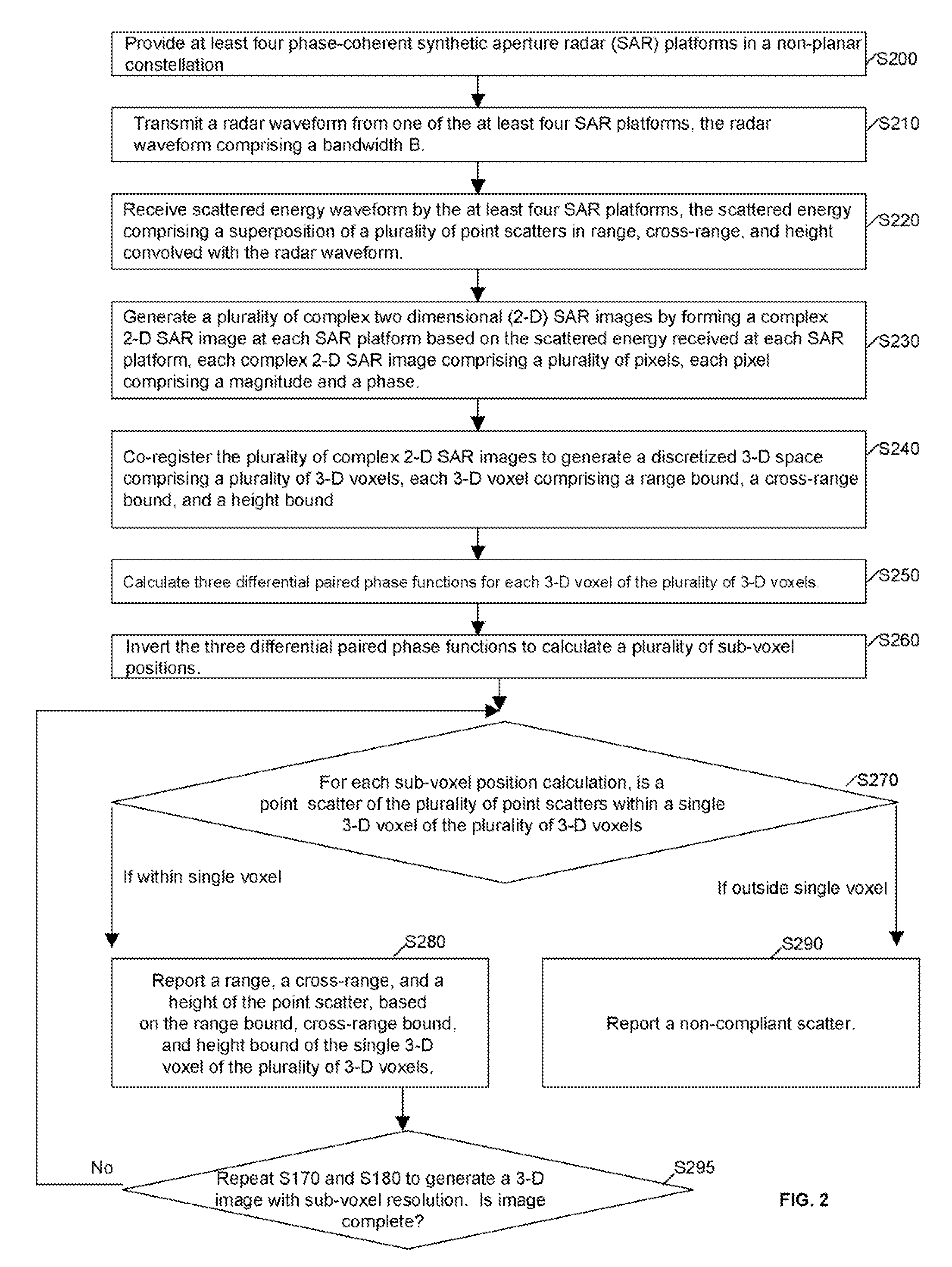Method and apparatus for 3-d sub-voxel position imaging with synthetic aperture radar
a synthetic aperture radar and position imaging technology, applied in the field of three-dimensional sub-voxel position imaging, can solve problems such as creating measurement errors, and achieve the effect of reducing sub-pixel position errors and minimizing quadratic error functions
- Summary
- Abstract
- Description
- Claims
- Application Information
AI Technical Summary
Benefits of technology
Problems solved by technology
Method used
Image
Examples
Embodiment Construction
[0023]An embodiment of the invention is described as follows, with reference to FIG. 1. The embodiment includes at least four non-coplanar, phase-coherent synthetic aperture radar (SAR) platforms 100, 101, 102, 103. The SAR platforms include phase-synchronized local oscillators cohered to a common reference clock. First SAR platform 100 transmits a radar waveform. The SAR platforms 100, 100, 102, 103 receive scattered energy waveforms resulting from the transmitted radar waveform and generate 2-D SAR images. A processor 110 communicates with SAR platforms 100, 101, 102, 103 and synchronizes SAR transmission and receiving intervals for the SAR platforms. An image-coregistration processor 120 communicates with SAR platforms 100, 101, 102, 103, receives the 2-D SAR images from the SAR platforms, and generates a 3-D SAR image having 3-D voxels after coregistering the 2-D SAR images. A processor 130 computes scatterer sob-voxel positions.
[0024]Another embodiment of the invention is descr...
PUM
 Login to View More
Login to View More Abstract
Description
Claims
Application Information
 Login to View More
Login to View More - R&D
- Intellectual Property
- Life Sciences
- Materials
- Tech Scout
- Unparalleled Data Quality
- Higher Quality Content
- 60% Fewer Hallucinations
Browse by: Latest US Patents, China's latest patents, Technical Efficacy Thesaurus, Application Domain, Technology Topic, Popular Technical Reports.
© 2025 PatSnap. All rights reserved.Legal|Privacy policy|Modern Slavery Act Transparency Statement|Sitemap|About US| Contact US: help@patsnap.com



